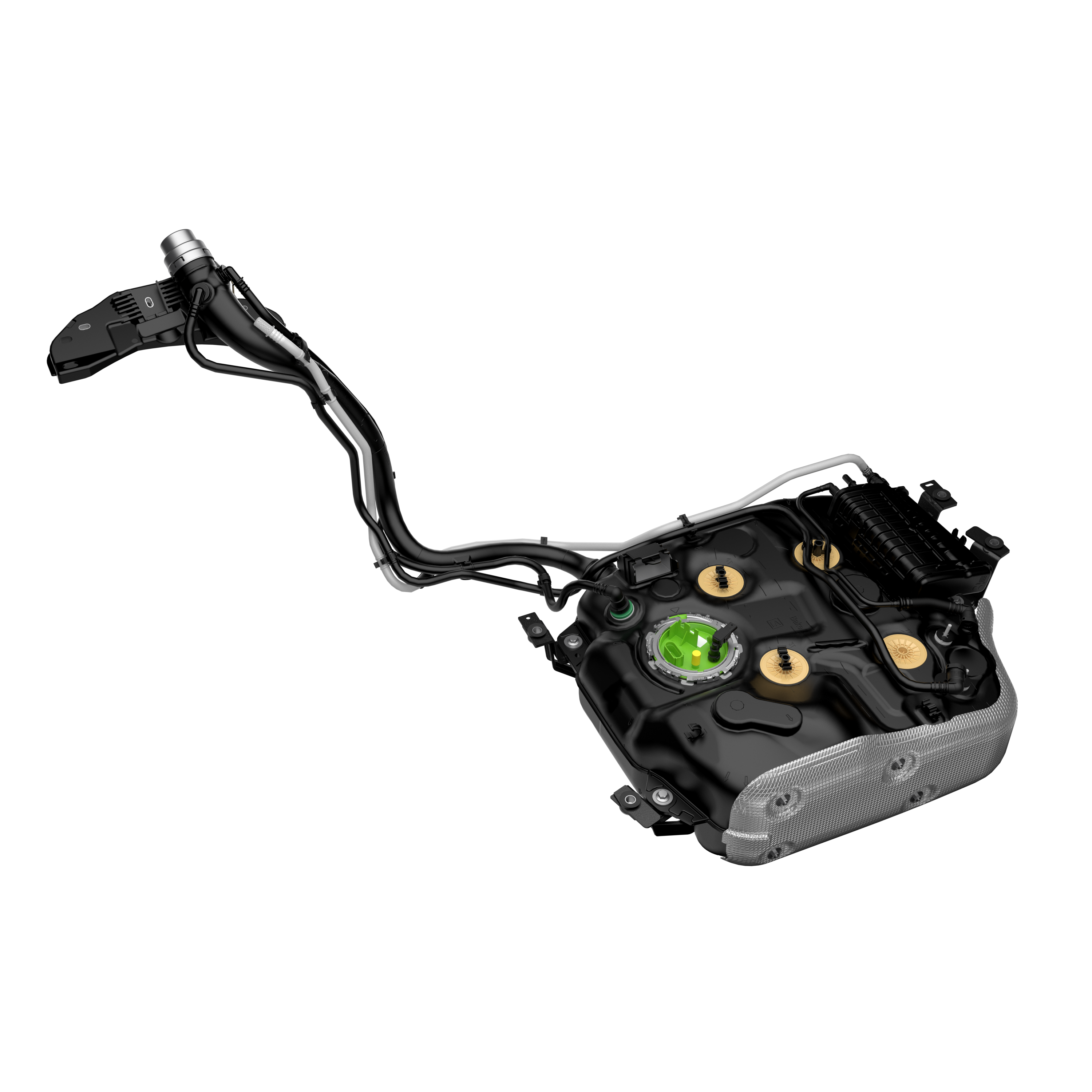Technology Ahead of Its Time
Over the last ten years, our product offering has taken huge strides forward.
The shift from steel to plastic tanks in the late 1990s facilitated this progress, and laid the foundations for our current Fuel Tank and Delivery Systems division. One of our unique competitive advantages has been our capacity to provide OEMs with a complete fuel tank system, and this advantage has now been bolstered by new technology.
In 2009, we won an Automotive News PACE award for our Ship in a Bottle (SIB) tank. The SIB fuel tank changed the way plastic fuel tanks were made. By integrating the fuel system components into the tank via a preassembled carrier, we developed the world’s first plastic PZEV fuel tank.
 As revolutionary as our SIB technology was, the 10-inch plastic parison opening that was required meant that it was limited on some applications. So, towards the end of 2013, we showed off our adaptable plastic fuel tank advanced process technology (TAPT) at the tank.tech conference in Munich. The TAPT technology used existing blow molding to separate a pre-formed, blow-molded parison into two halves while a robot inserted the fuel system components into designated areas of the tank assembly. TAPT could operate without size or location limitations.
As revolutionary as our SIB technology was, the 10-inch plastic parison opening that was required meant that it was limited on some applications. So, towards the end of 2013, we showed off our adaptable plastic fuel tank advanced process technology (TAPT) at the tank.tech conference in Munich. The TAPT technology used existing blow molding to separate a pre-formed, blow-molded parison into two halves while a robot inserted the fuel system components into designated areas of the tank assembly. TAPT could operate without size or location limitations.
The first TAPT tank was produced in Rastatt, Germany, and was used by Mercedes-Benz for the 2014 S-Class, a model that is renowned for being a standard-bearer for technology breakthroughs.
TAPT proved to be groundbreaking. It was the first application of our flexible manufacturing process that was designed to solve the integration of components in a traditional powertrain with a complicated saddle-shaped tank. TAPT made it possible to produce multiple types of fuel tanks for all types of powertrain, be it diesel, gasoline, flex-fuel, partial zero-emission vehicles (PZEV), or hybrid. What’s more, this is all possible via a single design blow tooling set.
Importantly, TAPT technology enabled hybrid vehicle manufacturers to accelerate the replacement of steel fuel tanks with plastic ones. Delivering plastic fuel tanks for hybrid-electric vehicles was beginning to set us apart. We were adapting our technology for the future, though even our engineers may not have recognized how quickly those advances would come into play…